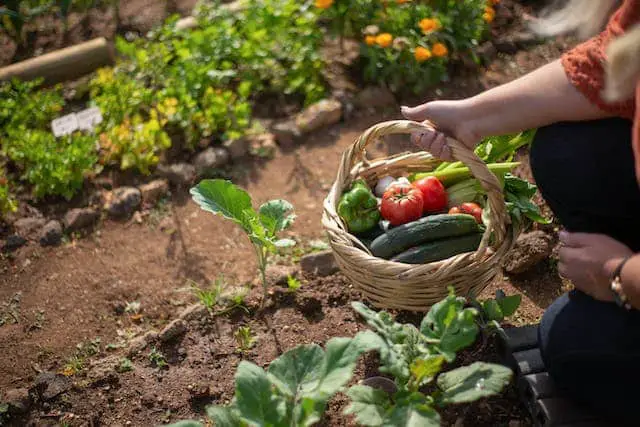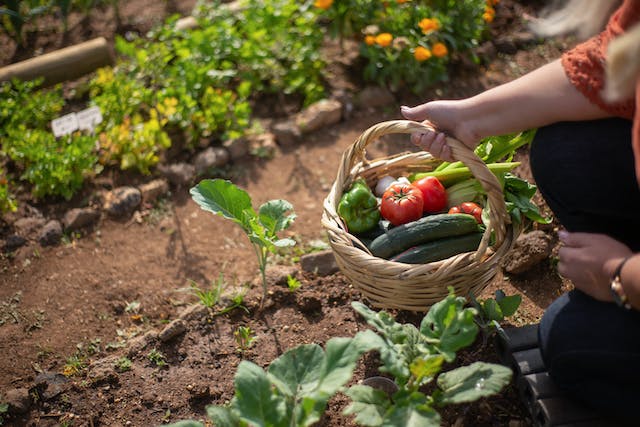Preparing to plant a vegetable garden is an exciting endeavor that requires careful planning and preparation.
The key to a successful vegetable garden lies in the soil, so one must focus on improving and preparing the soil for optimum plant growth.
This process can be broken down into several steps, including choosing a suitable location, testing and amending the soil, removing weeds and grass, and creating garden beds or rows.
Additionally, one must determine the layout of the garden, select the appropriate vegetables for the region and season, and gather the necessary tools and materials.
How do I prepare to plant a vegetable garden
By following these steps and investing time and effort in the preparation stage, you can ensure a fruitful and rewarding vegetable garden.
1. Choose a Suitable Location
Selecting the right location for your vegetable garden is crucial as it can greatly impact the success of your plants.Look for an area that receives a minimum of six hours of direct sunlight per day, as most vegetables thrive in full sun.
Ensure that the location is easily accessible, preferably close to a water source. Make sure the area has good drainage to prevent waterlogging, as overly wet soil can lead to root rot and disease.
2. Test and Amend the Soil
Before planting your vegetable garden, it is important to test the soil’s pH level and nutrient content. You can purchase a soil testing kit from a local garden store or send a sample to a professional lab for a comprehensive analysis.
The soil test will provide information about the soil’s acidity or alkalinity, as well as its levels of essential nutrients such as nitrogen, phosphorus, and potassium. Based on the test results, you may need to amend the soil to provide an optimal growing environment for your vegetables.
If the pH level is too high or too low, you can raise or lower it by adding lime or sulfur, respectively.
To improve nutrient levels, organic matter can be added in the form of compost, well-rotted manure, or other organic soil amendments. These additions will enhance soil structure, fertility, and moisture retention.
3. Remove Weeds and Grass
Prior to planting, it is important to remove any existing weeds or grass in the designated garden area. Weeds compete with vegetables for resources such as water, sunlight, and nutrients, and can hinder their growth.
Remove any visible weeds by pulling them out by hand or using a garden fork.
For persistent weed problems, consider using a garden tiller or a shovel to loosen the soil and remove the roots.
This process, known as “tilling,” not only gets rid of existing weeds but also disrupts their seeds’ ability to grow in the future. Additionally, adding mulch to the soil surface can help to suppress weed growth and conserve soil moisture.
4. Create Garden Beds or Rows
After clearing the area of weeds and grass, it is time to create garden beds or rows. The traditional method is to create raised beds by mounding soil into evenly spaced rows.
Raised beds offer several benefits, including improved drainage, better soil structure, and easier access for planting, maintenance, and harvesting. If you prefer the more traditional method of planting in-ground rows, use a garden hoe or a rake to create parallel rows.
Ensure that the rows are evenly spaced to allow easy maneuverability and access for weeding, watering, and harvesting.
5. Determine the Layout of the Garden
Decide on the layout of your vegetable garden based on your preferences, the available space, and the needs of your specific crops. Consider how much space each plant requires, as some plants, such as tomatoes or cucumbers, need more room to spread and grow.
Grouping plants with similar needs together, such as those with similar sun exposure requirements or watering needs, can help optimize the use of space and resources.
Also, consider companion planting, where certain plants benefit from being in close proximity to one another, such as marigolds deterring pests from tomatoes.
6. Select Appropriate Vegetables
Choosing the right vegetables for your garden is a critical step in ensuring a successful and bountiful harvest. Research which vegetables are suitable for your region and the time of year you plan to plant. Some vegetables thrive in cooler seasons, while others prefer warmer climates.
Consider the length of the growing season and the frost dates in your area to maximize your harvest. Take into account your personal preferences and dietary needs when selecting vegetables.
Choose a variety of plants that you and your family enjoy eating to ensure a diverse and abundant harvest.
7. Gather Tools and Materials
Before planting your vegetable garden, gather the necessary tools and materials to make the process more efficient and enjoyable.
Some essential tools include a garden spade or shovel for digging, a garden fork for turning soil, a hand trowel for transplanting seedlings, a garden hose, and watering can for irrigation, and a pair of gardening gloves to protect your hands.
You may also need materials such as compost, mulch, or organic fertilizers to provide the necessary nutrients and improve soil fertility.
These can be purchased from a local garden center or created at home using kitchen scraps or yard waste.
Conclusion
In conclusion, preparing to plant a vegetable garden involves a series of steps that are essential for the success of your crops.
By selecting a suitable location, testing and amending the soil, removing weeds, creating garden beds or rows, determining the layout, selecting appropriate vegetables, and gathering the necessary tools and materials, you are well on your way to having a thriving and bountiful vegetable garden.
Remember that gardening requires patience, time, and dedication, but the rewards are plentiful. Enjoy the process of preparing your garden, and soon you will be indulging in the fruits of your labor.






